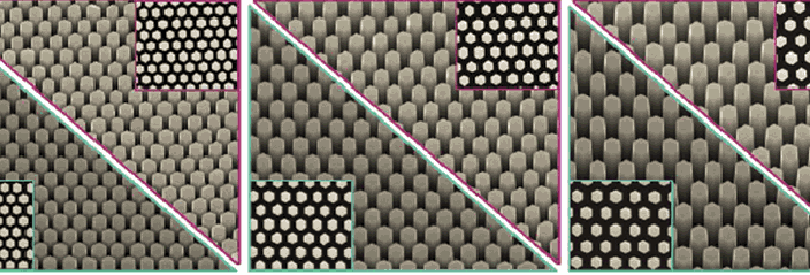Project ID: ANR-17-CE24-0038 
Manganite heterostructures show very promising resistive switching characteristics and multilevel resistance states. This makes them ideal candidates for alternative non-volatile memories, but also as building blocks for neuromorphic computation. In contrast to the more common filamentary switching, manganite devices have been shown to switch homogeneously over the whole device area and might therefore be superior with respect to their cell-to-cell and cycle-to-cycle variation. Moreover, electronic and ionic transport in these materials can be tuned by varying the composition and microstructure, which could directly affect the switching performance. Although it is clear that ion transport plays a key role in the switching mechanism, many open questions are still to be understood. In particular, grain boundaries (present in CMOS-compatible polycrystalline manganite devices) significantly influence ionic transport in these materials, but their impact on resistive switching has not been directly studied yet. In order to gain an integral view of the different aspects influencing the switching properties of polycrystalline manganite thin film devices, we will utilise the complementary expertise of 3 internationally leading groups on ionic transport in manganites (Grenoble, Aachen) and resistive switching devices (Jülich). We will fabricate epitaxial thin film model systems with different chemical compositions and well-defined grain boundaries, through the use of bicrystal substrates. The impact of the grain boundaries on the ion transport and the switching properties of the films will be comprehensively studied. The chemical composition and the structure of films and devices will be investigated by the large variety of techniques available within the consortium or at different European synchrotron facilities (e.g. SOLEIL, ESRF and BESSY). These include surface analysis techniques, such as scanning probe techniques and photoelectron spectroscopy, as well as bulk sensitive techniques, such as Raman spectroscopy or X-ray absorption spectroscopy. Performing operando spectroscopy of switching devices will enable us to gain insights into the chemical and structural changes taking place during device operation. Oxygen diffusion and surface exchange in different thin-film configurations will be investigated by 18O tracer diffusion experiments in combination with time-of-flight secondary ion mass spectrometry or Raman spectroscopy. These experimental studies will be complemented by molecular static and molecular dynamics simulations of oxygen diffusion in bulk and grain-boundary simulation cells. This will enable us to uncover the complex interplay between microstructure, chemical composition, ionic and electronic transport and the switching performance of manganite memristive devices. Based on this, we will develop new routes for the fabrication of CMOS-compatible manganite micro-devices with high reliability and improved switching kinetics.
Partners
LMGP (France) - Dr. Monica BurrielRTWH Aachen University (Gernany)- Pr. Roger De Souza
FZ-Juelich (Germany) - Pr. Regina Dittman
PhD Students
Carlos MoncasiJacqueline Böergers



